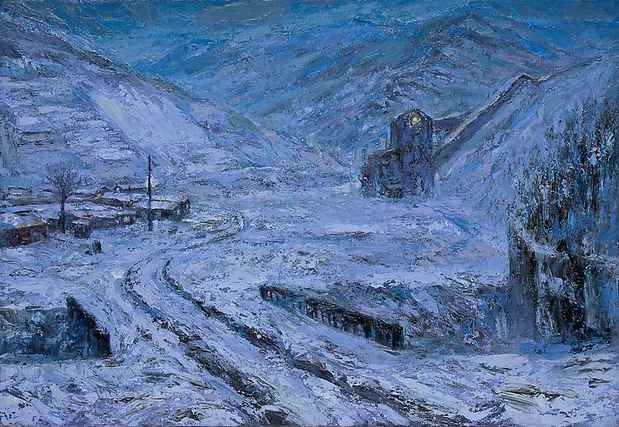Hwang Jai-Hyoung "Dirt to Grasp and Land to Lie On"
Gana Art Gallery

This event has ended.
Gana Art presents an exhibition of mixed media and oil on canvas works by Korean artist Hwang Jai-Hyoung. This will be the artist's debut solo exhibition in the U.S.
As an adult, Hwang Jai-Hyoung deliberately chose to move to the nearly abandoned town of Taeback, Korea to live and work as a miner and artist. The once vibrant and flourishing mining town had become a desolate place of hardship while the few remaining residents struggled to make a living. Minjung Art (Art of the People) was a pivotal art movement that drew from the energy of the popular uprisings of the1980s that finally defeated the succession of authoritarianregimesin the history of the modern Korean nation. Intellectuals, students, and workers joined under the common banner of "the people" (Minjung), and artists too became an integral part of the cause. Hwang's involvement in Minjung art was fully committed; by embracing "the people" of Taeback who embodied the plight of working class citizens, Hwang became an activist in life and in art.
Within a larger genealogy, Hwang draws from the naturalism of 19th-century realists in the line of Emile Zola or Gustave Courbet who took as subject the working conditions of the poor and re-presented the harshness of their lives in uncompromising and scientific detail. Hwang's thick surfaces of worked up textures of paint reveal a cold and grim reality-an almost direct apprehension of time and place--blanketed by silence and devoid of irony. His landscapes are haunting in their emptiness and darkness, yet there is a keen poignancy generated by the calculated deployment of light and texture. The shock of occasional color contributes both an element of strangeness and beauty to an otherwise desolate setting. In his mixed media paintings, Hwang's use of dirt and coal adds literal texture to the adage "art and life" as he superimposes debris to create a physical surface that directly signals the harsh and the real of both life and art.
Hwang's engaged commitment with suffering defies mainstream contemporary art trends as he steadfastly and unapologetically focuses on the praxis of prosaic and realistic presentation.The romanticism inherent in his realism, however, is reflected in the incidental flashes of beauty and promise that somehow manage to emerge even in scenes of almost complete abjection. As art professor and critic Chung Yong Mok states, "his work is worthy of being called 'true realism of the era.'''
Media
Schedule
from November 18, 2010 to January 08, 2011
Opening Reception on 2010-11-18 from 18:00 to 20:00